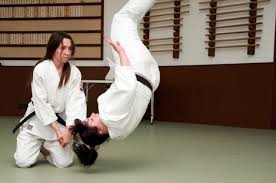DEVELOPMENT OF THE CLASSICAL FIGHT DURING THE SOVIET PERIOD
 In 1924, the country’s first classic wrestling championship was held – according to the new rules adopted in the USSR. Competitions were held in Kiev with the participation of 41 athletes. Fights were held in 5 weight categories according to the formula of 2 rounds of 20 minutes – with a possible draw outcome. Given the technical advantage, the wrestler received half the victory and could win on points. The first USSR champions were: Alexei Zhilin (Leningrad, light weight), author of several French wrestling manuals Vladimir Ivanov (Moscow, light weight), and Kiev Petr Makhnitsky (middle weight), Nikolai Sashko (light heavyweight) and Dmitry Gorin (heavy weight) )
In 1924, the country’s first classic wrestling championship was held – according to the new rules adopted in the USSR. Competitions were held in Kiev with the participation of 41 athletes. Fights were held in 5 weight categories according to the formula of 2 rounds of 20 minutes – with a possible draw outcome. Given the technical advantage, the wrestler received half the victory and could win on points. The first USSR champions were: Alexei Zhilin (Leningrad, light weight), author of several French wrestling manuals Vladimir Ivanov (Moscow, light weight), and Kiev Petr Makhnitsky (middle weight), Nikolai Sashko (light heavyweight) and Dmitry Gorin (heavy weight) )
The following championships took place in 1926-1928 (the 1928 championship was held as part of the All-Union Spartakiad, 250 athletes participated in it, including 19 wrestlers from Austria, Germany, Latvia, Finland, Switzerland, Sweden and Estonia). Since 1933, the championships of the Soviet Union in classical wrestling began to be played regularly (they were not held only in 1942 and 1943).
In 1939, the title of absolute champion of the USSR was first played. 10 athletes fought for him in a circular system – each with each. Konstantin Koberidze became the absolute champion then, with his own weight of 87.5 kg, he defeated several wrestlers with a weight of 110-120 kg. After that, the title of the absolute champion of the USSR in wrestling was played only four times: in 1940 and 1943–1945. And all four times he was won by the 12-time champion of the USSR, three-time European champion, winner of the XV Olympic Games Johannes Kotkas.
In 1947, Soviet wrestlers joined FILA. In the same year, the USSR national team first performed at the European Championship in classical wrestling. I. Kotkas, Konstantin Koberidze and Nikolai Belov became champions. Their followers maintained a glorious tradition. At the continental championships, Soviet wrestlers won a total of 130 gold medals.
In 1952, the Olympic debut of our “classics” took place. In addition to Kotkas, Boris Gurevich, Yakov Punin and Shazam Safin became champions of the Games in Helsinki. Five more champion titles were won by our athletes at the 1956 Games in Melbourne. And the Games in Montreal – 7 medals became the most productive for the Olympic “gold” for us. In total, Soviet (Russian) Greco-Roman style wrestlers won 40 gold medals at the Olympic Games.
At the World Championships in Greco-Roman wrestling, Soviet athletes first performed in Naples in 1953. In these representative competitions 208 wrestlers from 21 countries participated. Despite serious competition, our athletes won 5 gold, 1 silver and 1 bronze medals, and the USSR team won first place in the team event. In total, at world championships (from 1904 to 2001), representatives of our country won 155 gold, 58 silver and 34 bronze medals.
A unique achievement was established by Valery Rezantsev, who won the world title for seven years in a row – from 1970 to 1976, during this period he also twice won the Olympics. Nikolai Balboshin, Gogi Koguashvili and Viktor Igumenov five times became world champions.



